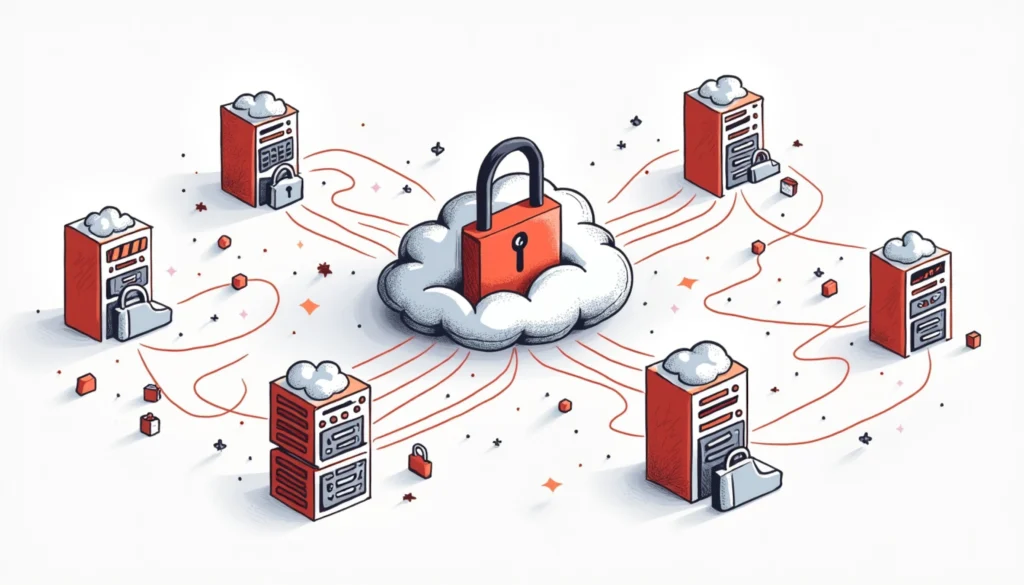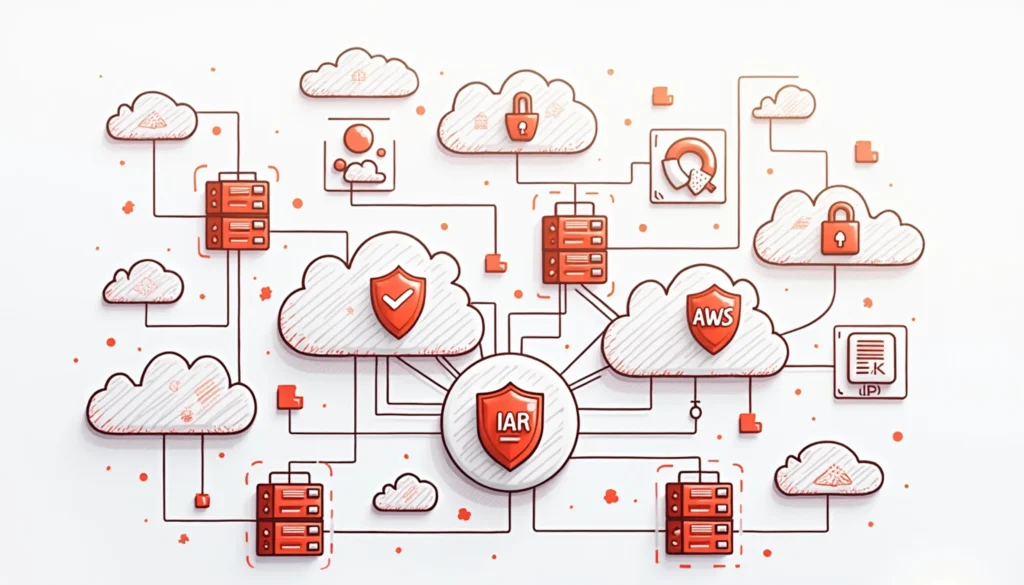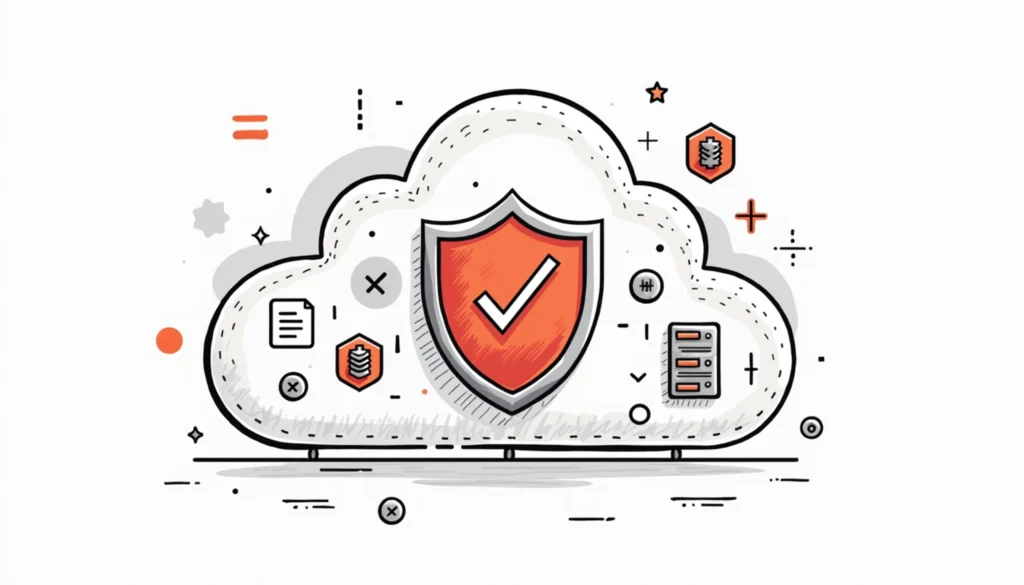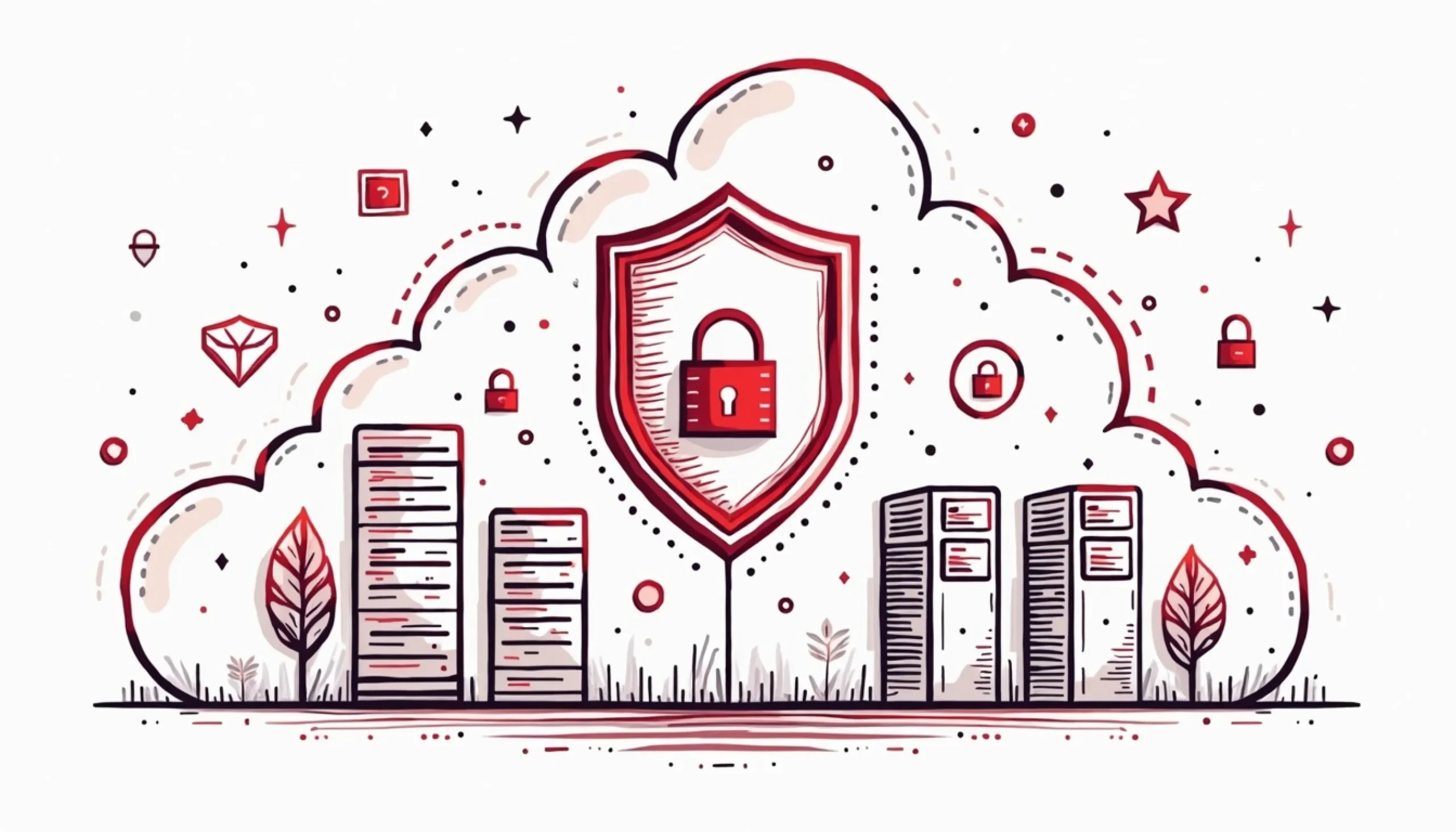Amazon Web Service (AWS) has firmly established itself as a leader in cloud computing, providing a breadth of AWS service offerings to help organizations modernize and manage their cloud infrastructure efficiently. Yet, as more businesses migrate critical workloads to the cloud environment, the need for AWS-managed cloud security best practices grows increasingly urgent. This guide explores essential concepts in AWS cloud security, highlights cloud security best practices, and explains how to leverage AWS security best practices to safeguard both startup and enterprise operations.
Understanding AWS Managed Cloud Security
AWS-managed cloud security centers on a blend of security best practices, services, and protocols aimed at protecting AWS infrastructure, applications, and data. Given the ever-evolving threat landscape, it’s critical to remain vigilant against unauthorized access, potential data breaches, and disruptive attacks.
Defining AWS Managed Cloud Security
At its core, AWS-managed cloud security uses a holistic framework that spans identity and access management (IAM), network security, threat detection, and encryption. Each component works together to keep data protected. For instance, AWS Identity and Access Management (IAM) lets administrators configure access control policies so that only authorized individuals can handle sensitive information. Coupled with an IAM access analyzer, organizations can quickly identify any resource policies that grant broad or unintended access.
To bolster logging and visibility, AWS CloudTrail tracks user and API activity within an AWS account, helping you detect and address suspicious actions. Meanwhile, services like Amazon GuardDuty and AWS Security Hub provide continuous monitoring and analysis of security events.
Importance of AWS Managed Cloud Security
In today’s digital era, cloud security is paramount. Implementing AWS-managed cloud security best practices not only prevents unauthorized access but also helps organizations build trust with customers, maintain uptime, and meet compliance obligations. Tools like AWS Shield and AWS WAF (Web Application Firewall) mitigate Distributed Denial of Service (DDoS) attacks and secure web applications, underscoring AWS security as a shared priority between AWS and its customers under the AWS shared responsibility model.
By consistently reviewing AWS security best practice checklists and using services such as AWS config and AWS security hub, companies ensure that security baselines are enforced. This proactive stance positions organizations to adapt rapidly to newly emerging threats.
Key Components of AWS Managed Cloud Security
A robust security posture depends on carefully selected AWS security tools and strategies. Here are the fundamental building blocks of AWS cloud security:

1. Identity and Access Management (IAM)
IAM is the linchpin for access management across your AWS environment. By assigning precise permissions, you protect critical resources against insider threats and unwarranted privileges. Features like multi-factor authentication (MFA) and IAM access analyzer reinforce security best practices by ensuring each user has only the level of access they truly need.
2. Virtual Private Cloud (VPC)
Using a Virtual Private Cloud (VPC)—often referred to as an Amazon VPC—allows you to isolate workloads within a private network, enhancing cloud security. This virtual private cloud setup offers subnets, route tables, and security group configurations to enforce inbound and outbound rules. These advanced network security controls reduce the risk of external threats, a vital aspect of cloud security best practices.
3. AWS Shield
AWS Shield is a vital defense mechanism for cloud security best practices, safeguarding applications from DDoS incursions. Many e-commerce platforms and mission-critical services rely on AWS Shield to maintain uptime. AWS Shield Advanced even provides 24/7 support from the AWS DDoS Response Team, offering deeper insights and mitigations to help you secure your AWS environment.
AWS Managed Cloud Security Best Practices
Achieving AWS-managed cloud security best practices demands a structured, proactive approach. Below are security best practices you should incorporate into your cloud environment:
1. Implement Multi-Factor Authentication
MFA remains a top AWS security best practice to fortify account logins. Even if a password is compromised, attackers still need the MFA code to gain access, reducing the chance of unauthorized access. Employing hardware or app-based authenticators adds another layer of data security to your environment.
2. Regularly Audit Configurations
Frequent assessments ensure your settings comply with AWS security best practices. Tools like AWS config help automate these checks, sending alerts if a resource drifts from a desired security baseline. Pairing AWS config with AWS security hub centralizes findings, so security teams can identify and remediate issues quickly across the AWS account.
3. Encrypt Data at Rest and in Transit
Strong encryption is fundamental for data security in any cloud environment. Use AWS KMS (the AWS Key Management Service) or a third-party key management service to encrypt data stored in services like AWS S3. Meanwhile, enforce SSL/TLS encryption for data in transit. Key rotation policies also ensure ongoing protection as part of your cloud security best practices.
4. Leverage Access Control and Least Privilege
Another integral security best practice is adopting a strict least-privilege model. By fine-tuning access control rules, you limit the scope of credentials and reduce vulnerabilities. aws organization can help manage multiple accounts securely, enabling consistent access policies at scale.
5. Employ Threat Detection Services
Solutions like Amazon GuardDuty and AWS Security Hub offer intelligent, real-time threat detection within your AWS environment. Amazon GuardDuty scans event logs (e.g., from AWS CloudTrail, Amazon VPC Flow Logs, and Amazon DNS) to identify unusual activity. You can also integrate it with AWS config for automated, comprehensive compliance and remediation processes.
AWS Managed Cloud Security Tools and Services
To implement these security best practices, AWS provides an extensive suite of tools:

- AWS CloudTrail: Tracks user and API actions within your AWS environment, a key component of AWS-managed cloud security best practices.
- AWS Config: Monitors and records configuration changes, ensuring adherence to AWS security best practice guidelines.
- AWS Security Hub: Consolidates findings from services like Amazon GuardDuty and AWS CloudTrail, giving you a unified view of your cloud security posture.
- AWS WAF: Protects web applications from SQL injection, cross-site scripting, and more. Pair it with AWS Shield for a robust, layered defense.
- AWS Key Management Service (or aws kms): Facilitates key creation, rotation, and storage for robust encryption standards, aligning with top cloud security best practices.
- Amazon EC2: While primarily a compute service, Amazon EC2 includes features like AWS security group rules that help isolate and protect workloads.
- Amazon CloudWatch: Offers logging and metrics for performance and security events, crucial for real-time monitoring in a cloud environment.
Maintaining Compliance in AWS Managed Cloud Security
Industries such as healthcare, finance, and e-commerce operate under strict regulations. Therefore, aligning with frameworks like HIPAA, PCI-DSS, and GDPR is central to cloud security strategy.

Compliance Frameworks and AWS
AWS adheres to numerous compliance standards, including HIPAA, PCI-DSS, and GDPR. The AWS shared responsibility model clarifies AWS’s role versus your organization’s role in securing your AWS infrastructure. By mapping these frameworks to aws backup, aws config, and other services, you ensure that essential compliance tasks like data protection and auditing are automated.
AWS Compliance Tools and Resources
AWS Artifact grants on-demand access to compliance documentation, while AWS config continuously checks your resources against predefined rules. Additional resources, such as the AWS Well-Architected Tool and AWS Organization features, help maintain consistent governance across multiple accounts, reinforcing cloud security best practices.
Hybrid Cloud and Beyond
For organizations using a hybrid cloud model, AWS-managed cloud security best practices still apply. Extending consistent network security policies and encryption strategies to on-premises environments prevents gaps in your security posture. Ensuring that AWS CloudTrail and AWS Security Hub collect logs and alerts from hybrid architectures further enhances visibility and reduces the chance of unauthorized access.
Elevate Your Cloud Security with Futuralis
Ready to adopt AWS-managed cloud security best practices and optimize your cloud environment? Futuralis is here to help. We provide agile, cost-effective cloud security best practices solutions customized to meet the needs of startups, SMBs, and growing enterprises. Our team specializes in AWS cloud migrations, access management, compliance, and more. Whether you’re configuring AWS Key Management Service, deploying AWS WAF, or refining AWS Security Hub alerts, our experts ensure a seamless, secure journey.
Don’t let complexity, high costs, or security concerns hinder your cloud computing goals. Reach out to Futuralis to explore how we can strengthen your cloud security posture with AWS-managed cloud security best practices, from AWS shield implementation to IAM access analyzer optimizations. Talk to an AWS Expert Today and discover how we help businesses navigate Amazon Web Service solutions with confidence—scaling securely every step of the way.
Additional Considerations
- AWS Resource Inventory: Keep track of every instance, database, and AWS S3 bucket to avoid misconfigurations.
- AWS Backup: Automate backups of Amazon EC2 instances and databases, aligning with cloud security best practices for data integrity and retrieval.
- Security Teams Collaboration: Foster an organization-wide security culture by integrating DevOps practices and encouraging real-time collaboration between development and security teams.
- Key Management Service Policies: Regularly review policies in AWS key management service (KMS) to keep encryption keys current and secured.
By following these strategies and harnessing the power of AWS’s integrated services—from AWS CloudTrail to AWS Security Hub—you can establish a resilient, compliant, and future-proof security framework in your AWS environment. Embrace these AWS-managed cloud security best practices to protect against threats, maintain compliance, and unlock the full potential of your cloud infrastructure today.



